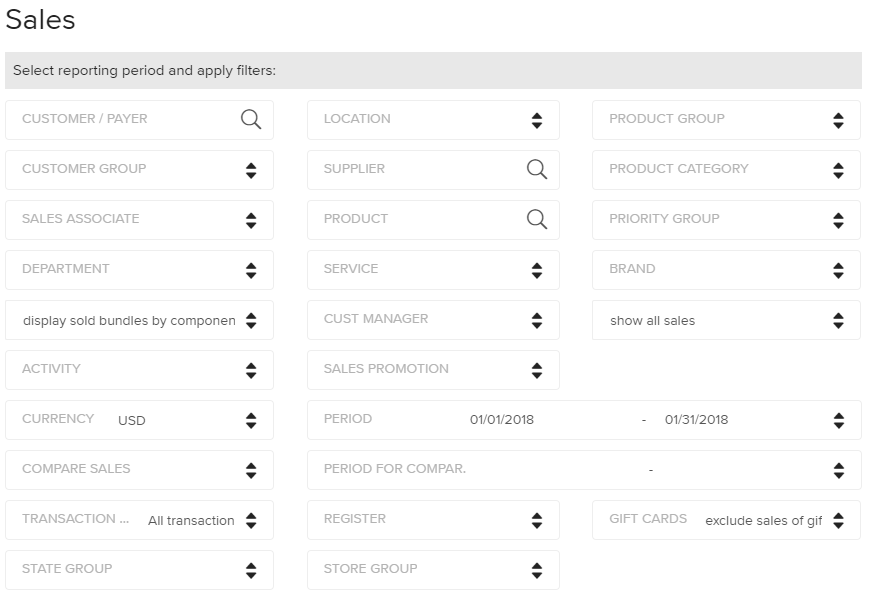Beyond the pressure of communicating your retail experience is the actual task of figuring out what to charge for your products, and how to draw in customers with your prices. A 2017 survey found that 60% of customers prefer to buy based on brand loyalty rather than trying something new.
How can you set your prices, then? Having a solid plan will help you decide, and there are a few proven pricing strategies that you can use right now.

Erply allows retailers to implement multiple pricing strategies with the quick creation of price lists. You can define them by specific location or region to account for operating costs, groups of customers to provide wholesale prices, or over time increments, to do variable testing.
The Three Pricing Strategies
All pricing strategies can be put into three distinct categories. That’s not to say there are only three pricing strategies you could use -- each strategy can be as unique as the business it was created for. When you break it down, though, you can only do three things with prices. You can set them low, high, or middle of the road.Follow
The premise of this strategy is to mimic a pricing scheme already in place. This strategy is safe because it is proven, and is best to use if you’re looking for stability. The most common way to build a follow pricing strategy is to first look at how your biggest competitor sets their prices. You can then use their strategy as a template for your prices. This is a sure way to sustain your sales, as long as you are mindful of factors unique to your business or brand and you understand your inventory. Some retailers may be able to sustain a low cost on certain merchandise, but if you have a low-profit-margin on that merchandise it may not pay to follow.
Penetrate
Using a penetration strategy is risky, as you practically start a price war with your competitors when you use one. The idea is simple -- give your customers immense value by setting a very low price point. You don’t have to do this with your entire inventory, but you should probably do it when your business or specific merchandise sales are growing.A common example of penetration pricing strategies is a cable company offering a massive discount on the same service their competitor is offering. Because the cable company is in a period of growth, they won’t suffer from the minimal profit margin like they would during a different business lifecycle period. At the same time, their customers reap the benefits of the low costs and are likely to be retained.
Skim
You can go low with your prices by using a penetration strategy, or you can ride the line by using a follow strategy, but you can also set your prices high by using a skim pricing strategy. A skim pricing strategy has the benefit of a good value proposition, where much of the value is retained which can then be put back into the business.Set your prices as high as you think your customers are willing to pay. You can do this with emerging market items, or other hot ticket items. With a skim pricing strategy, you can recover any incurred costs from the merchandise, and then slowly lower the price over time. Keep an eye on what your competitors are doing, as setting prices too high when your competitors have a low price point could drastically reduce sales.
Other Retail Pricing Strategies
Here are a few common pricing strategies that fall into one of the three basic pricing categories. These are great ways to build out a price list quickly and have been used successfully by retailers for years.Manufacturer Suggested Retail Price (MSRP)
Another common way to build a follow pricing strategy is to use the Manufacturer Suggested Retail Price (MSRP). This pricing strategy is also called vendor pricing. In the age of massive online retailers, MSRP is becoming archaic. Manufacturers still take the time to set list prices, however, and that information may be valuable to retailers.If you decide to use MSRP for guidance when building your price list, keep in mind factors that impact costs which are unique to your business. Demand for products may be different at one store than another, and shipping might also be higher or lower for you than other vendors.
Keystone Pricing
Alternatively, you could double your wholesale price, a tactic called keystone pricing. Running a retail store takes a lot of time, even without having to develop a pricing strategy. Keystone pricing can save you time, and if you evaluate costs as too high or too low, they can easily be adjusted.Make adjustments early, as you can quickly lose out of profits because of competitors selling at lower prices. If your inventory doesn’t sell at the keystone price, you may eventually have to mark it down during a time when you can’t take the lower profit margin loss.

Are your pricing strategies effective? Use Erply’s powerful reporting tools to compare sales before and after you implement price changes, between different stores and across products. Erply’s Cost of Goods Sold report will also enable you to factor in profit margin to your sales results. If you’re selling more due to lower prices, make sure it’s enough to offset the lower margins per
sale.